PRESTO PLANS
Sent straight to your inbox
CLICK HERE TO ACCESS
Sign up to receive 10 ready-to-use ELA resources your students will love!
10 FREE ELA RESOURCES
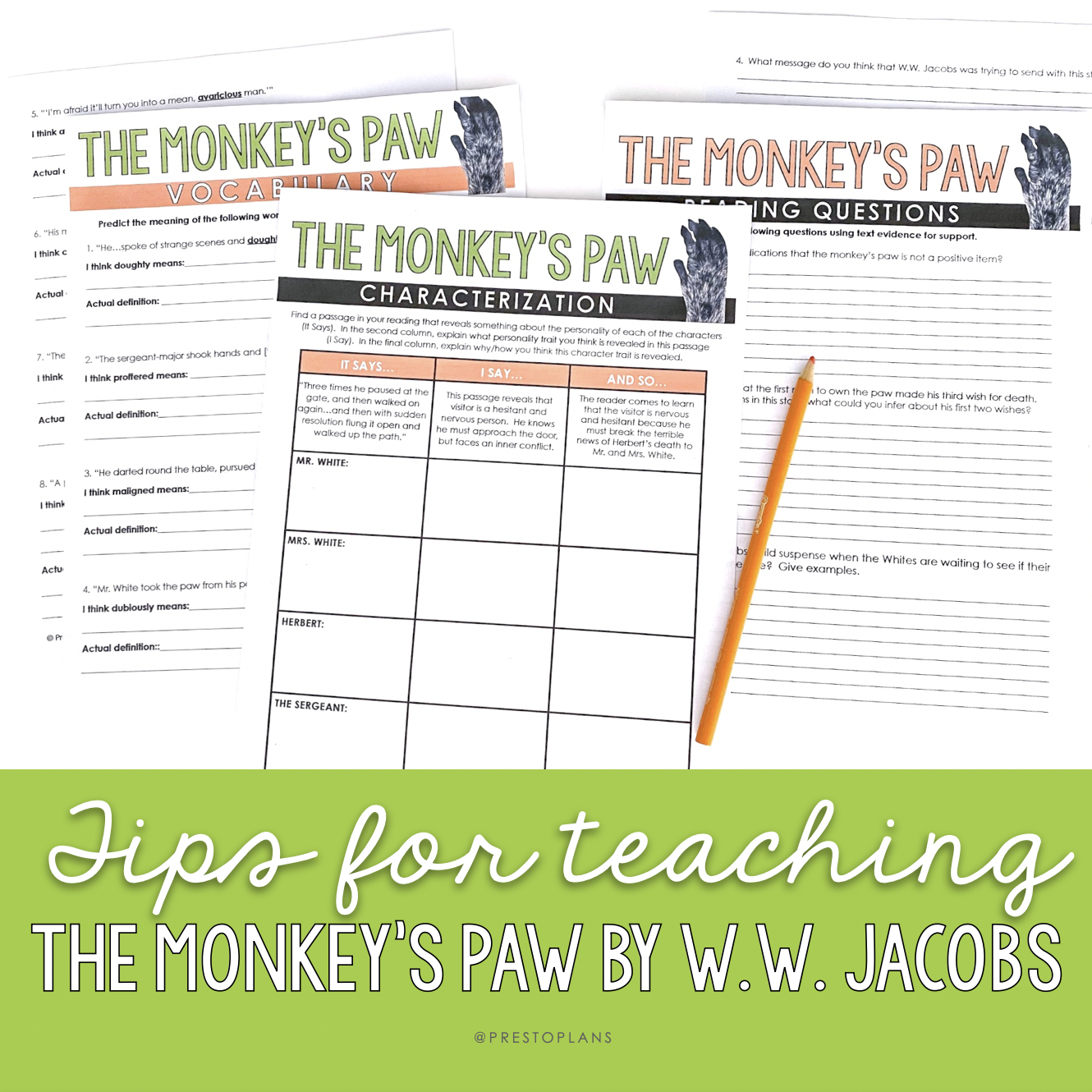
Teaching The Monkey’s Paw by W.W. Jacobs
If you are teaching “The Monkey’s Paw” by W.W. Jacobs, you might be looking for strategies and tips to help your students make the most of this mysterious and frightening short story.
While “The Monkey’s Paw” makes a great lesson in the lead up to Halloween, it can be used at any time of year. In the story, three wishes are granted to the owner of a mysterious – and possibly cursed! – mummified monkey’s paw. However, there is a high price to pay for interfering with fate.
So where to begin when teaching this classic, suspenseful tale? Here are some of my favorite tips and tricks to bring “The Monkey’s Paw” to life for middle or high school students.
Build Background Knowledge
I like to begin the lesson plan for “The Monkey’s Paw” by helping students gain an understanding of the story in context. To start, I provide background information on W.W. Jacobs, an English author. While he mostly specialized in comic works, he occasionally wrote horror stories. “The Monkey’s Paw” is one of his best-known works!
From here, I like to invite students to make a prediction! Knowing only the title of the story, I ask them what they think it will be about.
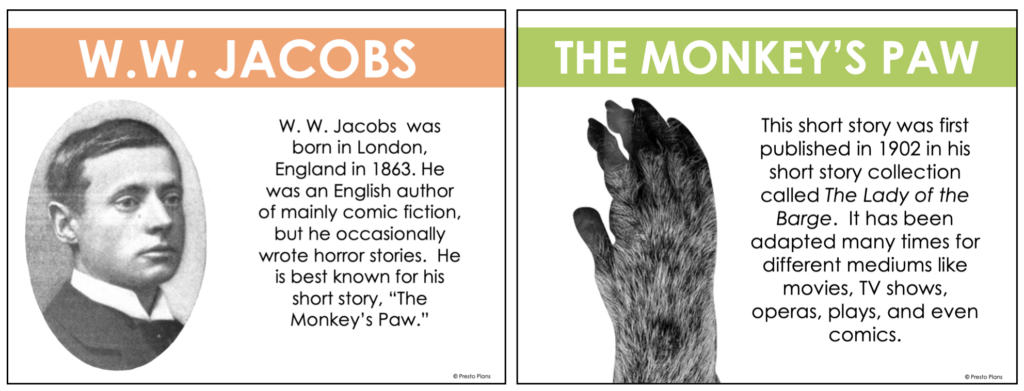
Pre-Reading Discussion
When teaching “The Monkey’s Paw,” I find it helpful to guide students through some pre-reading activities. I find these really set the tone and support students as they comprehend the text. First, I have students familiarize themselves with some of the more complex vocabulary terms found in the story. Using slides for reference, we examine the definitions of words like “doughty,” “proffered,” and “maligned.”
Next, it’s time for some questions! These can usually spark some lively debate and discussions. I like to ask some variation of the following questions as part of the lesson plan for teaching “The Monkey’s Paw:”
- If you had only three wishes, what would you wish for? (You can’t vote for more wishes!)
- If these wishes came true, do you think there would be any negative consequences?
- Do you believe in fate?
Read the Story
Now it’s time to read the story itself! I find that while “The Monkey’s Paw” is accessible to middle and high school readers, certain aspects of story need to be highlighted and reviewed. Here, you may wish to review literary terms, including mood, symbolism, allusion, and foreshadowing. I find this brief refresher before reading can really help when teaching “The Monkey’s Paw” to younger readers.
Another tip I find useful is to have students take breaks as they read the story and make predictions about what’s to come. Because “The Monkey’s Paw” is structured in two parts, the break between Part One and Part Two provides a natural opportunity to have this type of discussion.
Post-Reading Discussion
Now that the class has finished reading the story, it’s time for a post-reading discussion. Like the pre-reading questions, these should get the students to make opinions about the subject matter in the story. The difference is that now, their opinions will be informed by what they have read!
One way to do this is to set a series of questions up around the classroom. Students can move from station to station, sharing their responses on poster paper or sticky notes. Alternatively, you might prefer to lead a whole-class discussion. Here are a couple of the questions I like to use:
- What do you think happens at the end of the story?
- What would you wish for if you had a monkey’s paw?
Reading Questions
From here, it’s time for students to dive a little deeper into their understanding. When teaching “The Monkey’s Paw,” I like to provide a graphic organizer where students can explore their ideas on paper. Here, I prompt them to refer back to the text, looking for specific evidence to support their ideas and opinions.
I like to ask thought-provoking questions that not only encourage students to think about the plot of the story, but also the decisions W.W. Jacobs made as he developed the vivid and suspenseful mood. Students may wish to consider the following questions:
- How does W.W. Jacobs build suspense when the Whites are waiting to see if their second wish will come true?
- In your opinion, do you think that people have complete control over their lives, or does fate sometimes play a role?
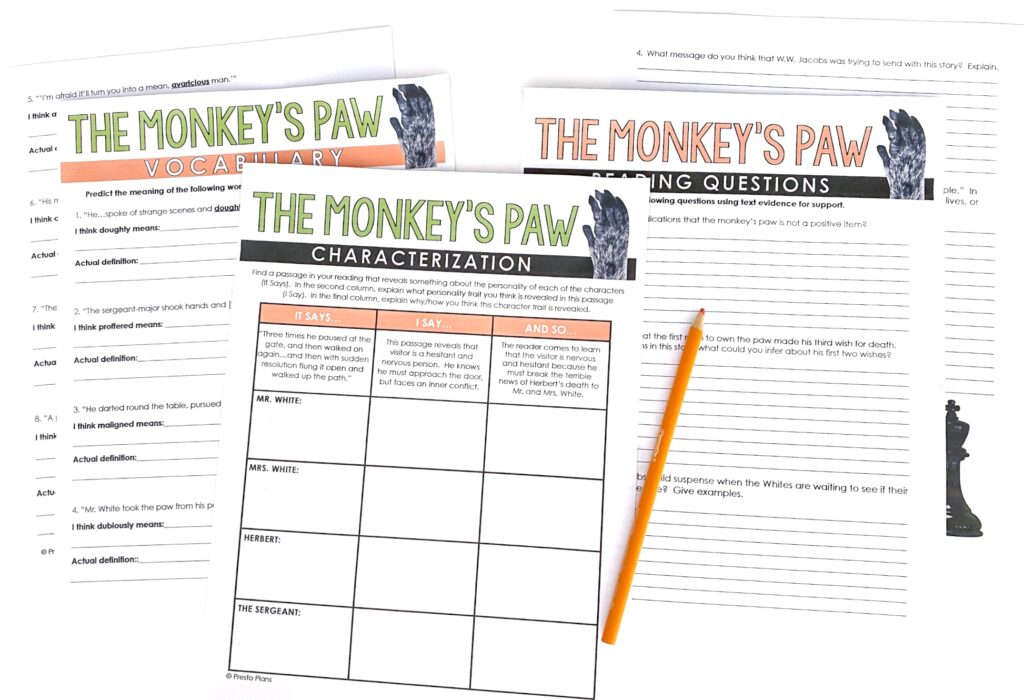
Characterization Activity
If you’d like students to gain a stronger understanding of the characters in “The Monkey’s Paw,” the “It Says, I Say, and So…” activity can really help. In this task, students must find a passage in the story that reveals information about the personalities of various characters, and record it in the first column of a graphic organizer.
In the second column, students describe and explain the personality trait revealed in the passage. Finally, in a third column, students explain why or how this personality trait is revealed.
Analysis Notes
At this point in the lesson plan for “The Monkey’s Paw,” I like to refer back to the same literary terms from before: mood, symbolism, allusion, and foreshadowing.
Now, students may be ready to explore these terms with greater understanding, and seek out evidence from the text to support their ideas. In particular, I like to draw their attention to the symbolism of the game of chess and the number three, as well as the shifts in mood that occur as the story progresses.
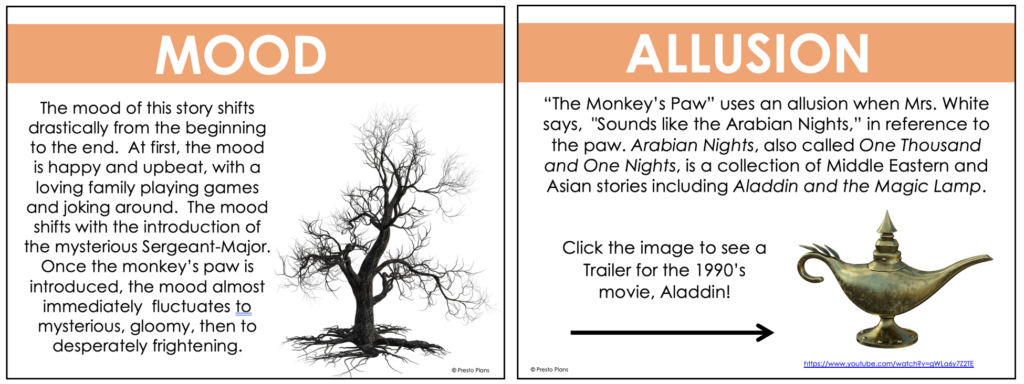
Video Interpretation
If time allows, I love to show middle and high school students a short film version of “The Monkey’s Paw.” Exploring the same story through a different medium provides an opportunity for rich discussion. Here, students compare how storytelling elements, including mood and foreshadowing, are developed differently for readers and viewers.
This activity makes a great standalone lesson for teaching “The Monkey’s Paw,” and is also a great way to re-capture students’ interest in the story if you are teaching this lesson over several class periods!
Alternative Ending Assignment
Finally, I love opportunities for students to practice their creative writing skills. As you wrap up teaching “The Monkey’s Paw,” your students may be frustrated by the story’s cliffhanger ending.
This is the perfect opportunity for middle and high school students to create their own ending to the short story. In this task, they can tie up any lose ends, and let their creativity flow! This assignment is flexible – you might want to give students a period or two to write a few short paragraphs, or they might create an entirely new story!
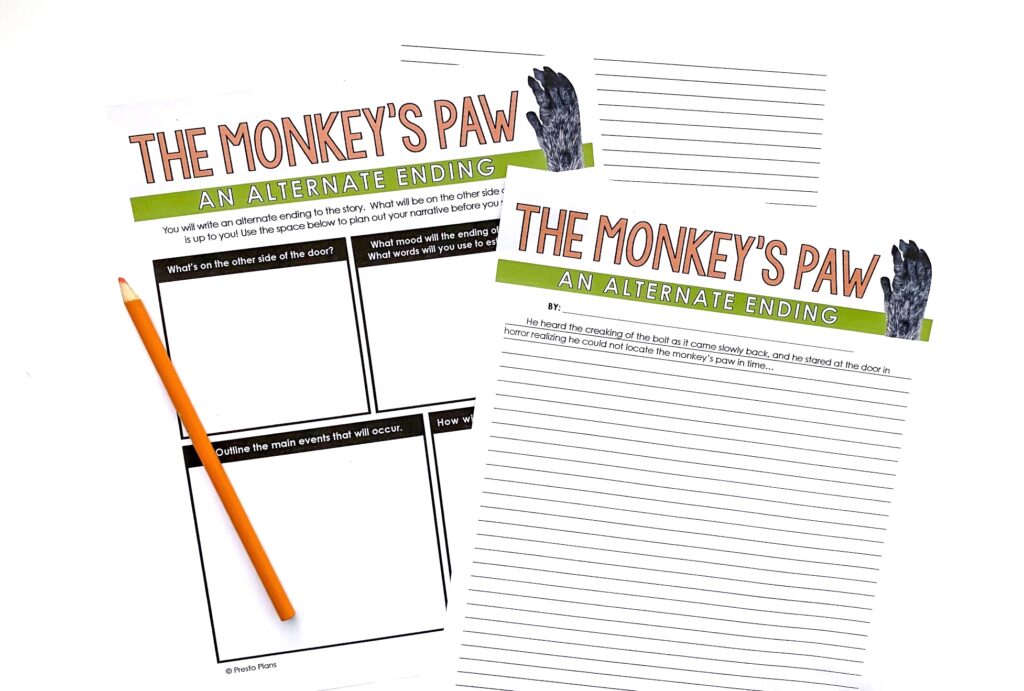
There you have it! I hope you love teaching “The Monkey’s Paw” in October (or at any time of year!).
If you love teaching spooky short stories as much as I do, check out my Scary Short Stories Bundle! It has everything you need to make the most of the Halloween season in the middle or high school ELA classroom. Or you can grab the ready-to-use resource for this short story below:
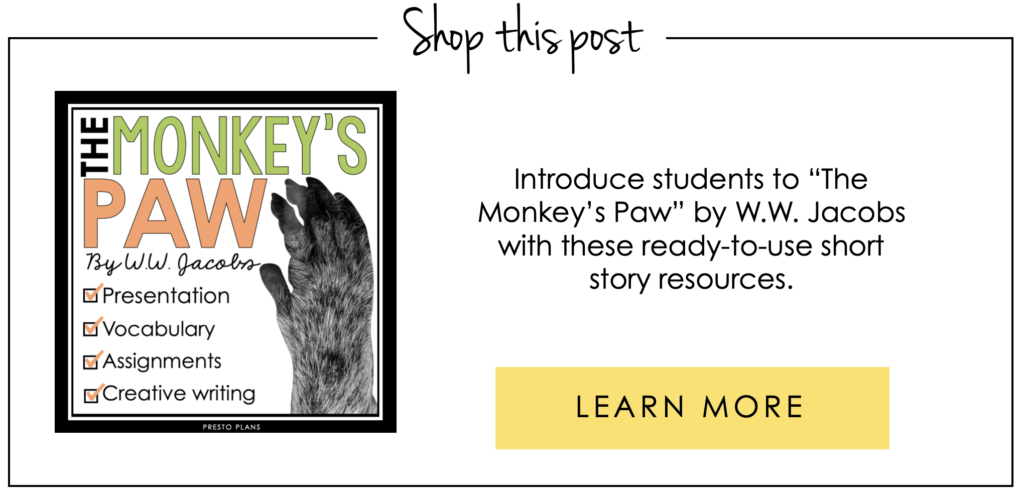
Search the blog for what you are teaching
GIVEAWAYS
sent straight to your inbox!
share this post